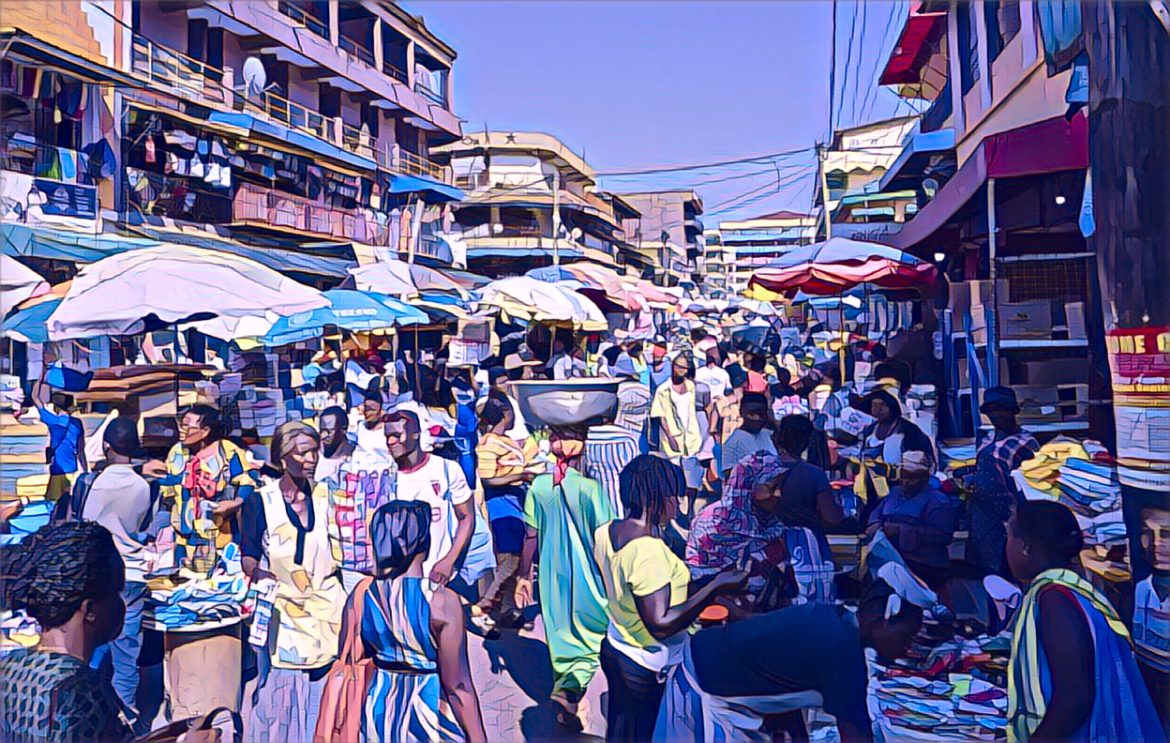KEY POINTS
Ghana’s inflation rate declined to 21.2% in April 2025, marking the fifth straight monthly drop amid signs of moderating price pressures.
Food and non-food inflation rates also fell, but a month-on-month increase of 0.8% suggests that inflation risks remain active.
Regional disparities persist, with the Upper West recording the highest inflation at 37.1% and Volta Region the lowest at 18.3%.
Ghana’s inflation rate declined slightly to 21.2% in April 2025, down from 22.4% recorded in March, according to data released by the Ghana Statistical Service (GSS). The figure represents the fifth consecutive month of falling inflation, pointing to a slow but steady easing of price pressures in the economy.
Announcing the data at a press briefing in Accra, Government Statistician Dr. Alhassan Iddrisu described the development as an encouraging sign of moderation in inflation, but cautioned that rising monthly trends highlight the need for continued vigilance.
“This sustained downward trajectory is a positive signal, but the month-on-month increase from 0.2% in March to 0.8% in April suggests that inflationary risks remain,” he stated.
Food and Non-Food Inflation Decline
April’s Consumer Price Index (CPI) was recorded at 258.6, an increase from 256.5 in March and up significantly from 213.3 in April 2024. Food inflation saw a modest decline to 25.0% from 26.5% in the previous month, reflecting slight relief in grocery prices.
Non-food inflation also fell, registering 17.9% compared to 18.7% in March. The lower figures indicate a slowdown in cost increases for goods and services such as transportation, housing, and education.
According to Ghana Business News, Inflation on locally produced items also dipped to 22.7%, down from 24.0%, signaling that domestic supply-side pressures may be easing. However, imported goods saw no change, with inflation holding steady at 17.7%.
At the regional level, significant disparities persist. The Upper West Region recorded the highest year-on-year inflation rate at 37.1%, while the Volta Region had the lowest at 18.3%. These regional imbalances remain a concern for policymakers working to ensure equitable economic recovery across the country.
“We have an opportunity to consolidate the gains we’ve made so far, but this will require coordinated fiscal and monetary strategies to maintain stability,” Dr. Iddrisu added.
Analysts attribute the sustained inflation decline to a combination of factors, including tighter monetary policy by the Bank of Ghana, improved agricultural output, and relative currency stability in recent months. The central bank has kept its policy rate elevated to curb inflation, and recent data suggest these measures may be taking effect.
Economists warn, however, that global headwinds—such as fluctuating fuel prices, interest rate hikes in major economies, and supply chain uncertainties—could still reverse progress. Additionally, Ghana’s debt restructuring efforts and IMF-backed economic program are expected to play a crucial role in managing fiscal risks and bolstering investor confidence.
In the coming months, inflation is expected to ease further if macroeconomic stability is preserved, although temporary shocks—especially in food and energy sectors—could cause volatility. The Ghanaian government has been under pressure to ensure that real incomes are protected, particularly for lower-income households disproportionately affected by inflation.
GSS says it will continue to monitor both headline and core inflation indicators to provide timely updates for policymakers and the public.




